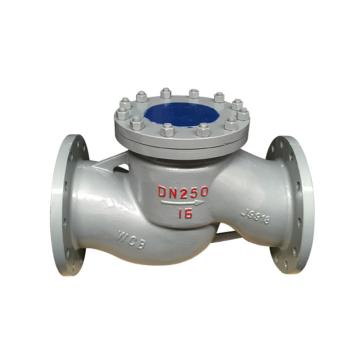Swing Check Valve Care and Maintenance Tips for Optimal Performance
Maintenance of Swing Check Valves A Comprehensive Guide
Swing check valves are essential components in various piping systems, widely used to prevent backflow and maintain unidirectional flow of fluids. While their design is relatively simple, ensuring their proper operation and reliability requires a systematic maintenance approach. This article will explore the importance of swing check valve maintenance, common issues that may arise, and best practices to keep these valves in optimal condition.
Importance of Maintenance
Regular maintenance of swing check valves is crucial for several reasons
1. Preventing Backflow The primary function of a swing check valve is to prevent backflow in a system. Any malfunction in the valve can lead to reverse flow, causing potential damage to pumps, compressors, and other system components.
2. Ensuring System Efficiency A faulty swing check valve can cause a significant pressure drop in the system, leading to reduced efficiency and increased operational costs.
3. Extending Equipment Lifespan Routine maintenance helps identify wear and tear early, allowing for timely repairs or replacements, which can significantly extend the lifespan of the valve and other associated equipment.
4. Avoiding Emergency Downtime Regular inspections and maintenance can help avoid unexpected failures, which can result in costly downtime. Proactive maintenance ensures that the system continues to operate smoothly.
Common Issues with Swing Check Valves
Swing check valves can experience various issues that affect their performance
1. Sticking This is often due to debris or sediment buildup within the valve. If the disc does not swing open and close properly, it can lead to backflow.
3. Wear and Tear Frequent opening and closing can lead to wear on the seat and disc, compromising the valve's ability to seal properly.
swing check valve maintenance

4. Improper Installation Incorrect alignment or installation can lead to valve malfunction. It is crucial to ensure that the swing check valve is installed according to the manufacturer's specifications.
Maintenance Best Practices
To ensure the optimal performance of swing check valves, consider the following maintenance practices
1. Regular Inspections Schedule regular inspections to check for signs of wear, corrosion, and debris buildup. Look for any leaks around the valve and ensure that the disc moves freely.
2. Cleaning Periodically clean the valve, especially if the system handles fluids with high sediment content. This process may involve disassembling the valve, cleaning the internal components, and reassembling it properly.
3. Lubrication If applicable, lubricate the moving parts of the swing check valve to prevent sticking and ensure smooth operation. Use lubricants recommended by the manufacturer to avoid damage.
4. Sealing and Gasket Checks Inspect the seals and gaskets for any signs of wear or damage. Replace them as necessary to maintain a proper seal and prevent leaks.
5. Testing Perform regular functional tests to ensure that the valve is closing properly. A simple way to test is to monitor the flow and check for any backflow during operation.
6. Documentation Keep a detailed maintenance log that records inspections, cleaning activities, repairs, and replacements. This documentation helps in tracking the valve's health over time and aids in planning future maintenance.
7. Professional Assistance In cases of significant wear or complex issues, consult with a professional. Experienced technicians can provide insights and perform specialized maintenance tasks that may not be possible for in-house personnel.
Conclusion
Swing check valves play a vital role in maintaining fluid flow control in various applications. Regular maintenance is essential to ensure their longevity, reliability, and efficiency. By understanding the importance of maintenance and adhering to best practices, operators can prevent common issues and ensure that their swing check valves continue to function optimally. In the long run, proactive maintenance not only saves costs but also enhances the overall performance of the entire system.
-
The Versatility of Ball Valves in Fluid Control SystemsNewsJun.10,2025
-
The Practical Benefits of Centerline Butterfly ValvesNewsJun.10,2025
-
The Benefits of Bellows Seal Globe Valves for Industrial SystemsNewsJun.10,2025
-
The Advantages of Offset Butterfly ValvesNewsJun.10,2025
-
Ductile Gate Valves: Strong, Reliable, and Essential for Every SystemNewsJun.10,2025
-
Cast Iron Gate Valves: A Reliable Solution for Every SystemNewsJun.10,2025
-
Why Choose a Brass Gate Valve for Superior Performance and DurabilityNewsMay.09,2025




